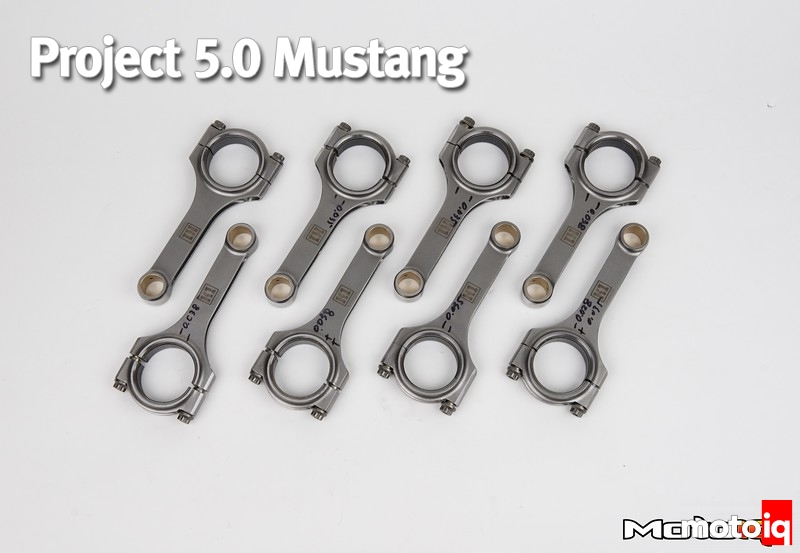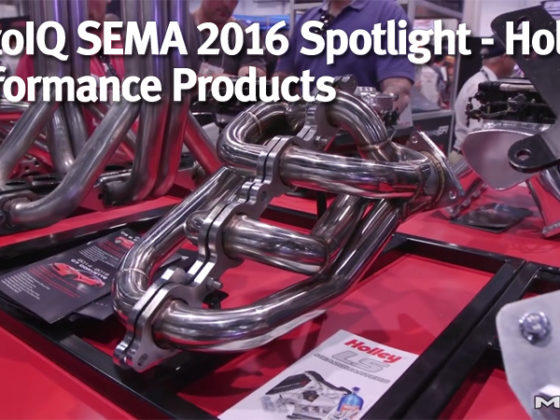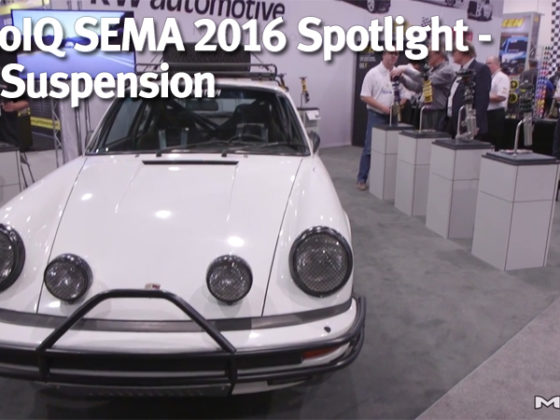In the last segment covering the engine build on our 5.0 liter Mustang, we addressed the top end with CNC ported heads and camshafts from Ford Motorsports. Now it’s time to fortify the engine’s bottom end so we can have a screaming high-revving naturally aspirated Coyote engine that is still reliable.
Our target for this build is to have a safe 8000 rpm redline, wheel horsepower in the high 400 range and run on 91 octane California pump gas with reliability and track car endurance. We feel that this stuff is all pretty easily done.
Read more about project Mustang!
 Like many of our projects lately, we turned to JE for a set of their FSR forged pistons. JE’s FSR pistons are made of tough 2618 low silicon aluminum alloy. They are CNC machined to tight tolerances. In the case of our pistons, JE’s latest FSR blank profiles were used.
Like many of our projects lately, we turned to JE for a set of their FSR forged pistons. JE’s FSR pistons are made of tough 2618 low silicon aluminum alloy. They are CNC machined to tight tolerances. In the case of our pistons, JE’s latest FSR blank profiles were used. Since the Coyote has a stock compression ratio of a relatively high 11:1. We felt that our piss poor 91 octane fuel could not safely tolerate a higher compression ratio, especially for track driving so we stuck to the stock 11:1 compression. This means that our piston has a dome on it.
Since the Coyote has a stock compression ratio of a relatively high 11:1. We felt that our piss poor 91 octane fuel could not safely tolerate a higher compression ratio, especially for track driving so we stuck to the stock 11:1 compression. This means that our piston has a dome on it.The dome is taller than stock to compensate for deeper valve reliefs needed for more valve clearance to make room for cams with higher lift. We opted for a full-length conventional steel piston pin for maximum reliability.

The greater expansion usually means that wider piston to wall clearances are needed to avoid scuffing and even seizing. Not so with FSR pistons. JE has the piston skirt design and barrel profile down so clearances can be minimized and we have found FSR pistons to run quietly when we have used them, great for street engines. The strut-type design also means minimal weight as there is no excess material, unlike fully skirted pistons.




